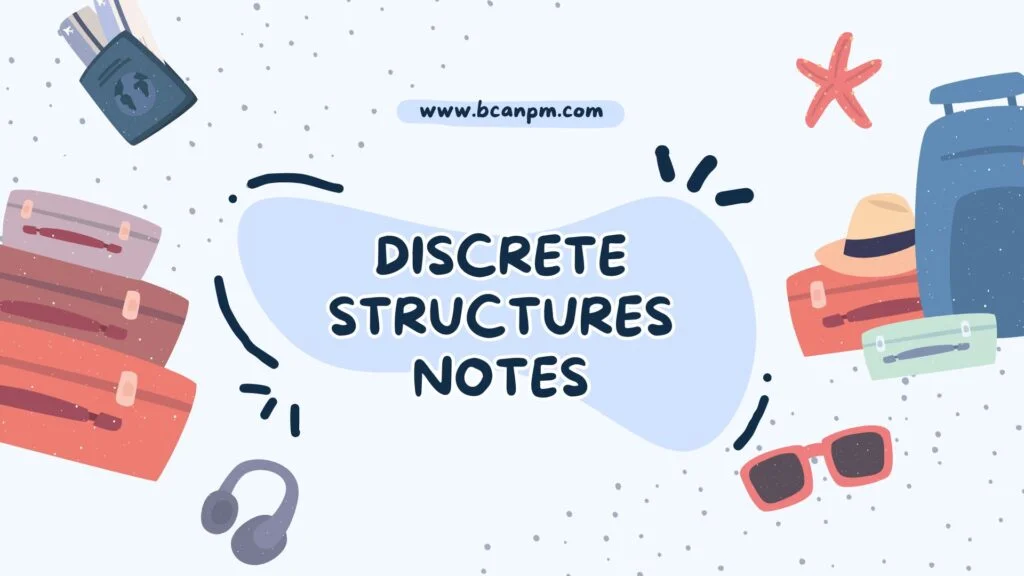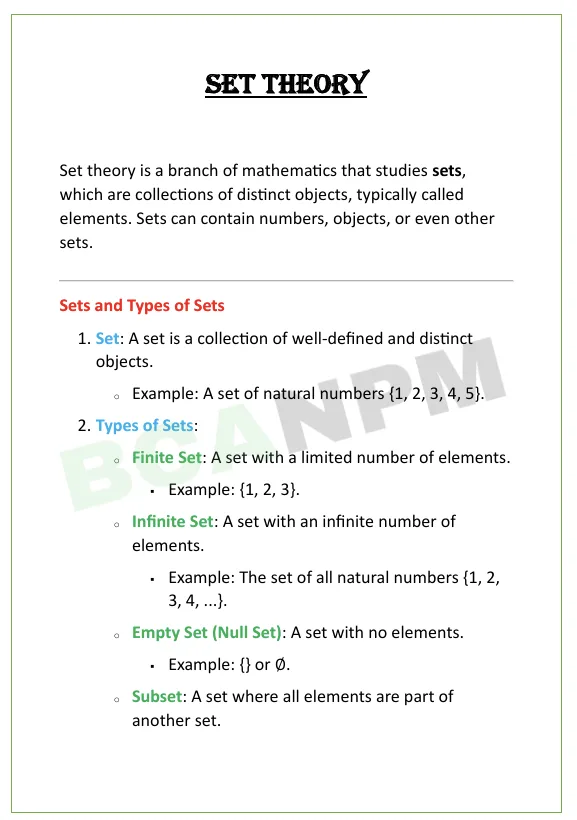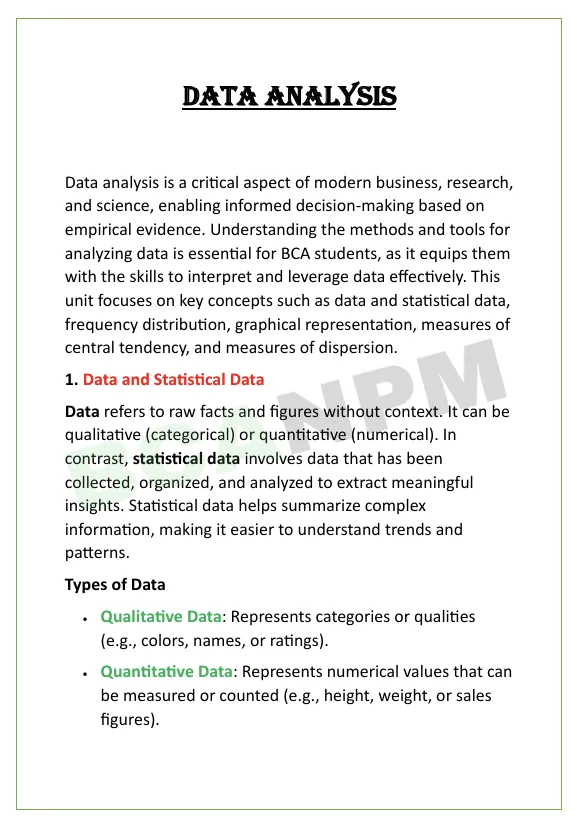
Free Download Discrete structures Notes in pdf – Bca 2nd Semester. High quality, well-structured and Standard Notes that are easy to remember.
Welcome to Bcanpm.com
Bcanpm provides standard or well-structured Bca Notes for students. The notes are free to download. Each semester notes of Bca are available on www.bcanpm.com. In this post you can download notes of Discrete structures Notes (C4). All units are available to download for free.
Discrete structures Notes Unit 1 – 5

Unit 1: Set Theory
“Set theory” is a fundamental branch of mathematics that deals with the study of sets, which are collections of distinct objects, called elements.

Unit 2: Mathematical Logic and Circuits
“Mathematical logic” is a branch of mathematics that focuses on formal systems, reasoning and the structure of statements..

Unit 3: Modern Algebra
“Modern algebra”, also known as abstract algebra, is a branch of mathematics that studies algebraic structures such as groups, rings, fields and vector spaces.

Unit 4: Graph Theory
“Graph theory” is a branch of mathematics that studies graphs, which are structures consisting of vertices and edges.

Unit 5: Data Analysis
“Data analysis” is the process of inspecting, cleaning, transforming, and modeling data to discover useful information, support decision-making and draw conclusions.
Syllabus of Discrete structures
UNIT – 1
1. Set Theory
- Sets, Types of Sets, Basic Operations on Sets, Venn diagram, Cartesian product of two sets, Distributive
law, De Morgan’s Law. - Functions: Interval and sub-intervals. Definition of function and examples, polynomial, rational,
exponential, logarithmic and trigonometric functions.
UNIT – 2
2. Mathematical Logic and circuits
- Basic Concepts, Propositions or Statements, Truth Table, Connectives and Compound Propositions,
Implication, Bi-conditional of Connectives, Converse, Inverse and Contra positive of an Implication,
Tautology, Logical Equivalence, Switching Circuits
UNIT – 3
3. Modern Algebra
- Binary Operations, Properties of Binary Operations, Semi group, Monoid, Groups, Finite and Infinite
Groups, Algebra of Groups, Subgroups and other Groups.
UNIT – 4
4. Graph Theory
- Graph, Multi Graph, Complete Graph, Bi Graph, Degree, Degree Sequence, Matrices of graphs, tree,
spanning trees
UNIT – 5
5. Data Analysis
- Data and Statistical Data, Frequency Distribution, Graphical Representation, Measure of the Central
Tendency, Measures of Dispersion (Mean Deviation and Standard Deviation)